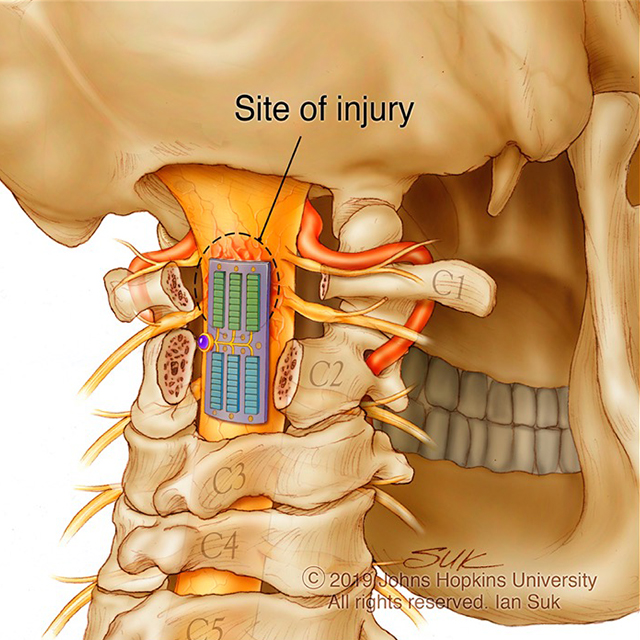Inspired by a parasitic worm that digs its teeth into its host’s intestines, Johns Hopkins researchers have designed tiny, star-shaped microdevices that can latch onto intestinal mucosa and release drugs into the body.
David Gracias, a professor in the Johns Hopkins University Whiting School of Engineering, and gastroenterologist Florin Selaru, director of Johns Hopkins’ Meyerhoff Inflammatory Bowel Disease Center, led a team of researchers and biomedical engineers that designed and tested the machines.
Made of metal and thin, shape-changing film and coated in a heat-sensitive paraffin wax, “theragrippers,” each roughly the size of a dust speck, potentially can carry any drug and release it gradually into the body.
Selaru says that extended-release drugs often make their way entirely through the gastrointestinal tract before they’ve finished dispensing their medication.
“We’ve been working to solve this problem by designing these small drug carriers that can autonomously latch onto the intestinal mucosa and keep the drug load inside the GI tract for a desired duration of time,” he says.
Thousands of theragrippers can be endoscopically deployed in the GI tract. Once released, the machines migrate to the mucosal wall. When the grippers’ wax coating reaches the temperature inside the body, the devices close and clamp onto the colonic lining. The closing action causes the tiny, six-pointed devices to dig into the mucosa and remain attached to the colon, where they release their medicine payloads gradually into the body. Within a day or two, the theragrippers lose their hold on the tissue and are cleared from the intestine via normal gastrointestinal muscular function.
In their animal experiments, Johns Hopkins researchers loaded a pain-relieving drug onto the grippers. Their studies found that the animals into which theragrippers were administered had higher concentrates of the pain reliever in their bloodstreams than did the control group. The drug stayed in the test subjects’ systems for nearly 12 hours versus two hours in the control group.
Read the original version of this article: Johns Hopkins Develops Tiny Machines That Deliver Medicine to the Intestines.



